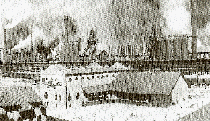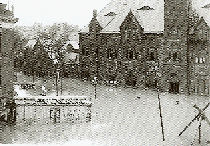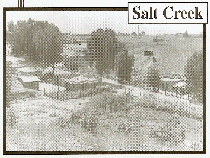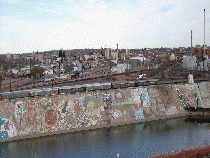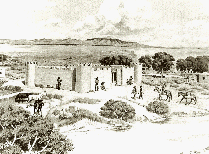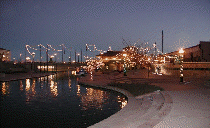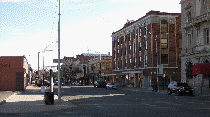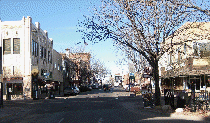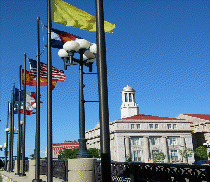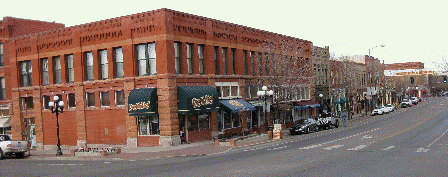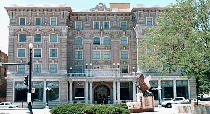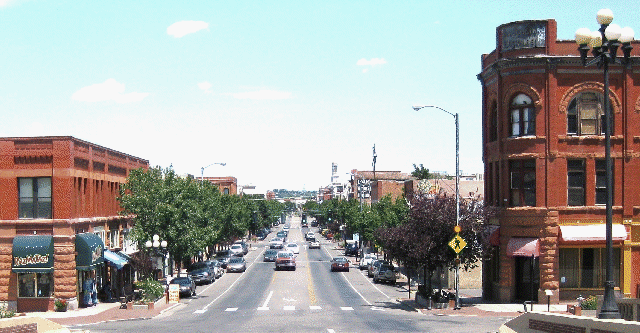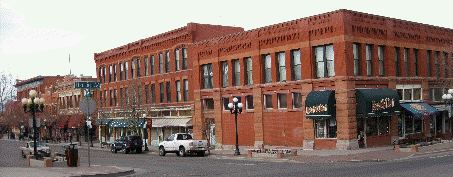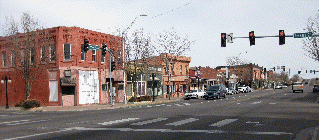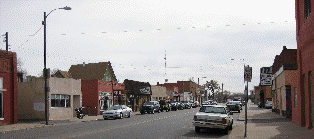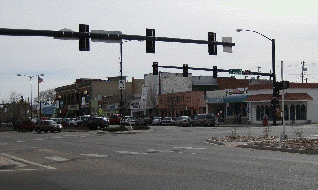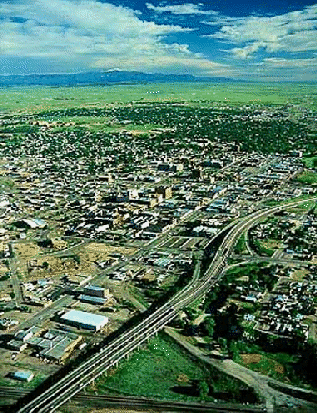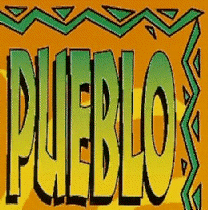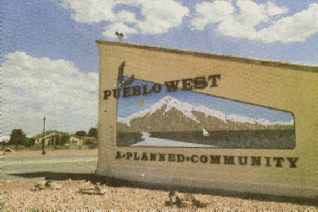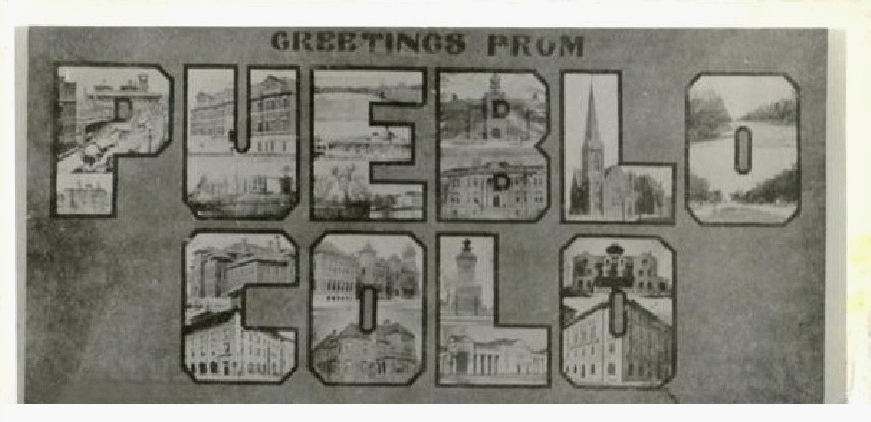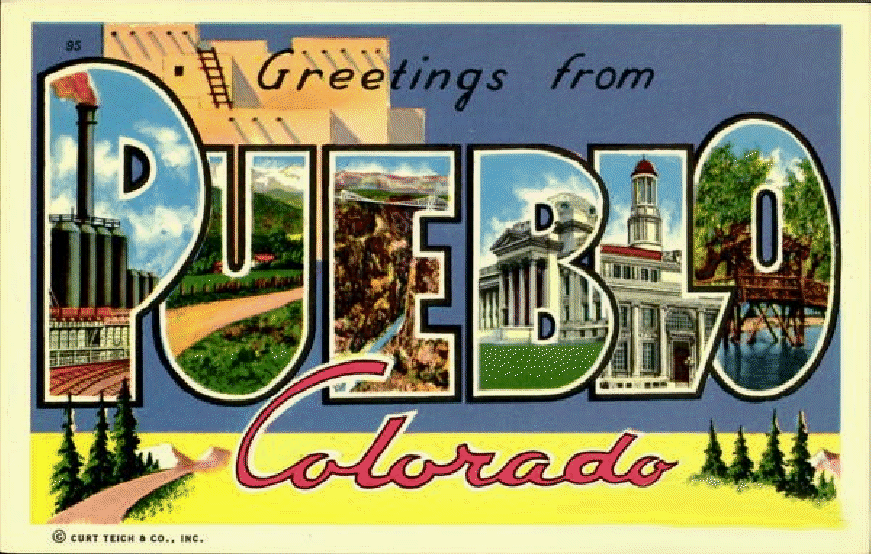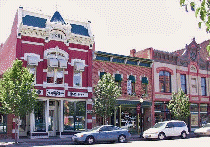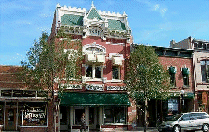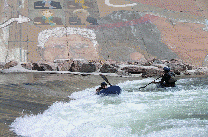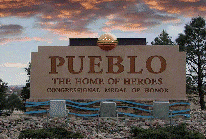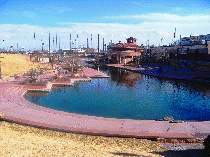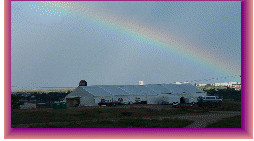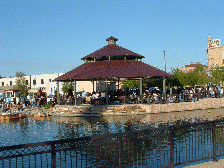Abundant Life Ministries
Abundant Life Ministries
Pueblo, Colorado
Located 103 south of Denver on the Arkansas River, the city of Pueblo, Colorado lies at the eastern foothills of the Rocky Mountains.
Our city has a long and colorful history dating back to 1842 when it was called Fort Pueblo.
The region around Pueblo was long used as a crossroads for hunting and trade by several Native American peoples.
In 1806 explorer Zebulon Pike erected the first structure, a small temporary garrison of logs, at what was to become the city.
The first substantial development was begun in 1842 by trader Jim Beckwourth and other trappers, as they built an adobe fortress where Fountain Creek
and the Arkansas River meet. Beckwourth gave the community its name, "Pueblo" which means "town" in Spanish.
Settlement of the region was accelerated by a gold rush in 1858.
The arrival of the railroad in 1872, combined with discovery of coal nearby, created an industrial boom.
It's been said that, what brought our city from a small Fort in southern Colorado to become the economic backbone of Colorado, were the ore mines.
The current city of Pueblo represents the consolidation of four separate towns:
Pueblo (incorporated in 1870), South Pueblo (incorporated in 1873),
Central Pueblo (incorporated in 1882), and Bessemer (incorporated in 1886).
Pueblo, South Pueblo, and Central Pueblo legally consolidated as the City of Pueblo between March 9 and April 6, 1886, whereas Bessemer joined Pueblo in 1894.
In the Great Flood of 1921, roughly one-third of Pueblo's downtown businesses were lost, along with a substantial number of buildings. Until the Great Flood of 1921, Pueblo was considered the saddle-making capital of the world. After the flood, it would take many years for the people of Pueblo to rebuild and to return to a sense of economic resurgence.
The flooding in 1921 led to the construction of a flood-control project on the Arkansas River. Industrial development increased in the late 1980s as new plants
moved to the city and others expanded operations.
In 1996 the city began a project to restore the Arkansas River to its historic channel through downtown Pueblo.
The city now features the river walk, an extensive trail system, industrial park, and revitalized downtown area to this effect.
With an official population of 102,121 (according to the 2000 census), Pueblo now covers a land area of 45.4 square miles, according to the United States Census Bureau, with an elevation of 14662 ft. Also according to the United States Census Bureau, Pueblo includes 40,307 households, and 26,118 families.
According to the 2005 Census estimates, the city had grown to an estimated population of 103,495 and had become the ninth most populous city in the State of Colorado and the 242nd most populous city in the United States.
The average income for a household in the city was $29,650, and the average income for a family was $35,620. Males had a average income of $29,702 versus $22,197 for females. The per capita income for the city was $16,026. About 13.9% of families and 17.8% of the population were below the poverty line, including 24.3% of those under age 18 and 9.1% of those age 65 or over.
The main industry in Pueblo for most of its history was the Colorado Fuel and Iron (CF&I) steel mill on the south side of town. The steel-market crash of 1982 lead to the decline of the company. After going through several bankruptcies, the company was acquired by Oregon Steel Mills and recently changed its name to Rocky Mountain Steel Mills.
Other principal manufactured items are industrial water cooling equipment, aerospace equipment, food products, and food processing machinery.
The city is also the location of several federal offices, including the Consumer Information Center of the United States General Services Administration.
Air transportation is through Pueblo Memorial Airport.
The city is home to Colorado State University - Pueblo, as well as Pueblo Community College.
Cultural institutions include the El Pueblo Museum, with exhibits on the various cultures that inhabited the region; the Sangre de Cristo Arts and Conference Center, with several galleries and a children’s museum; and a museum of military aircraft.
The Colorado State Fair is held in the city each August.
Pueblo is also known as "America's Home of Heroes", as was proclaimed by the United States Congress in 1993. In fact, Pueblo hosts National Medal of Honor Day,
and has had as many as four Medal of Honor recipients living in the community.
President Dwight D. Eisenhower perhaps said it best on October 8, 1953, "What is it ... something in the water out there in Pueblo? All you guys turn out to be heroes!"
Indeed, Pueblo, Colorado is a unique "town," a beautiful city and a great place to live, with a diverse people from all walks of life. Indeed, Pueblo has many "heroes." Many of these heroes are dads and moms. Some are teachers, city leaders, ministers ... and the list goes on. They are a people who seek to make a positive difference in the lives of others. So together, we pray, we build, we live - and hopefully, it is so that we may all fulfil the plan of God for such a people and for such a time as this.
